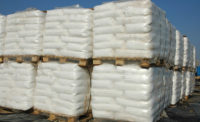Customizing Efficiency in Manufacturing
Companies can realize major efficiencies and cost savings with standardized processes.

Process improvement initiatives can vary greatly from company to company; however, many organizations share a common problem: the challenge of managing process variations. This is particularly true among adhesives and sealants manufacturers, where multiple locations within the country and, increasingly, abroad are forcing companies to accommodate a host of local rules and regulations that demand customization. Companies that are able to introduce standardized processes across multiple markets and locations can realize major efficiencies, economies of scale, and cost savings, making them even more competitive in an increasingly contentious marketplace.
Going Global
The demands of localization and customization mean there will often be exceptions to the rule. This translates into the need to adapt processes for different product lines, regulations or other regional nuances. Managing these process variations can prove to be unnecessarily complex and costly for the manufacturer. It’s the reason analyst Steve Stanton says, “Ninety percent of the organizations I know have failed at standardization.”
Most manufacturers tend to respond to the problem of managing process variations in one of three ways, none of which is particularly successful:
- They create standardized processes that apply at a high level only. Most commonly found in early-stage or smaller adhesives and sealants manufacturers, this approach processes information at the 10,000-ft level; in other words, basic information is so summarized that it’s of no use to anyone for day-to-day process guidance or as a platform from which to navigate future change.
- They generate mega-processes that are designed to cover every conceivable variation that could occur. Typically preferred by highly technical teams, this approach attempts to get a handle on business complexity by developing and then demanding strict adherence to detailed, technically correct process documents that apply approved process notation standards. This approach doesn’t work particularly well, either, since business teams usually find the processes so difficult to comprehend that they can’t engage, and they end up ignoring them as a result. Being so tied to innumerable processes also stalls agility and future opportunities for improvement. And because the process owners are reluctant to make any changes or implement improvements, process documentation tends to be relegated to some dark corner of the office, where they are quickly forgotten.
- They allow process owners to create their own separate process variations. Commonly found among manufacturers that are further along the process maturity curve, this approach is fraught with problems. Primary among them is the fact that separate, individual process variations that are owned, managed, and changed independently inevitably result in administrative headaches, product returns, and so forth. In short, you may as well not have processes at all.
Standardized Processes
Despite the subpar track record most manufacturers have in dealing with process variations, I continue to believe it is possible for adhesives and sealants companies to achieve the benefits of standardized processes across the entire operation, provided there’s an option to control process variations when and where necessary. Seven underlying capabilities are required.
1. Core processes must be standardized.
Adhesives and sealants manufacturers that operate multiple sites in multiple states or countries, sell multiple products, and encounter various customer requirements must first agree on a set of standard core processes. These should then be assigned to global process owners who are responsible for their ultimate governance and control. This master platform will serve as a blueprint against which all local variations are then considered.
2. All process variations must be authorized.
Once the core processes are established, local process variations should then be established only from this standard process base. Any changes applied by variant experts should be highlighted and visible against the core processes. There should be no modifications to process variations, unless authorized by the global process owners. This enables the process owners to retain control.
3. Any changes must be tracked.
Manufacturers must have the ability to oversee, compare and report on all of the process variations that exist for each standard process. This enables the company to see and track exactly what activities have been added, removed, or changed. It also gives process owners insight into how those processes vary from the original process. In this way, they can be completely aware of what is happening at a macro level while simultaneously empowering local teams to be flexible, responding to regional or customer-specific demands.
4. New process variations must be easily accessible.
Once a process variant has been introduced, it must be simple for teams to find and access the variations that are applicable to them. Ideally, employees should be able to select the process variant they seek electronically from a list or, even better, be routed automatically to the exact variant relevant to them. This will not only save huge amounts of time in sifting through documentation or manuals, it will also help to support process adherence.
5. Ongoing changes must be made collaboratively.
If the global process owners want to make a change to the standard process, they need to alert local variant owners. Local process owners must have a chance to provide feedback on any planned change and to approve plans to merge a change into the established processes. By introducing this layer of consultation and dialogue, variant owners have the opportunity to apply their on-the-ground expertise to ensure that the particular needs of the process variation are still being met.
6. Global intelligence must be shared.
A global reporting function is essential so that process champions can always view the entire inventory of process variations, and see how these compare against the standard core process.
7. Accounting for costs and time is essential.
Process variant costing and timeframe tracking is an absolute necessity. Only with this information can process owners compare the costs and time between variations and the standard process. Analyzing these factors allows manufacturers to decide whether it is worth retaining or removing specific process variations. It also highlights cost savings opportunities and the impact of process changes.
Tracking and measuring the impact of process variations is critical, giving adhesives and sealants manufacturers a clear understanding of the volume and effects of process variations, as well as their benefits or drawbacks. Armed with this information, global process owners and local teams can: assess processes; challenge them as necessary; and improve transparency, compliance, and control. In turn, employees will have the power to be more agile, because they have sufficient ownership to customize or eliminate activities as they see fit.
Next Steps
Introducing a more simplified process management and improvement culture that encourages participation at both a global and local level allows adhesives and sealants manufacturers to achieve all of the benefits of scale from standardization. It simultaneously provides them with the freedom to customize processes if and when the business requires it. ASI
For more information, contact the author at ivan.seselj@promapp.com or visit www.promapp.com.
Looking for a reprint of this article?
From high-res PDFs to custom plaques, order your copy today!








